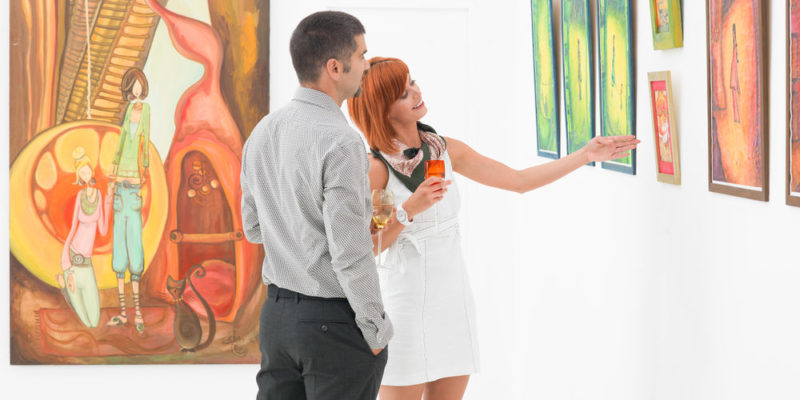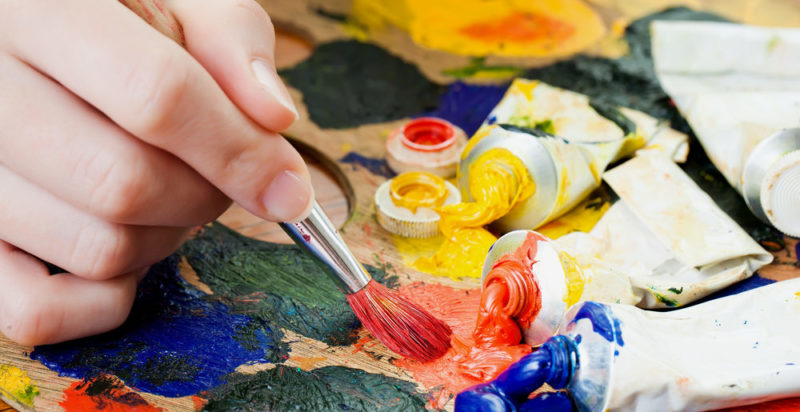We explain what creativity is, what the creative process is like and its classification. Also, its characteristics, impediments and more.
What is creativity?
Creativity is a capacity thanks to which new ideas or new associations between already known ideas can be generated . In it, various mental processes intervene, related to each other, which have not yet been fully explained.
Creativity is closely associated with imagination , but in creative individuals the development of characteristics such as sensitivity and curiosity have also been observed.
Since it has not yet been possible to distinguish what the differences are between the mental strategies of conventional thinking and creative thinking, creativity is observed in the final result . However, philosophers and psychologists have detected various processes, forms and levels that characterize creativity.
Although it is also present in certain animal species , here we are exclusively concerned with human creativity.
Creativity process

The study of creativity is difficult and there are not many certainties about it. However, the philosopher Arthur Koestler identified three phases of creativity (created with respect to scientific research , but applicable to other areas), which also correspond to the states of consciousness studied by neuroscience:
- Logical phase. In this phase the problem is formulated, data is collected on the problem and a first search for solutions is carried out.
- Intuitive phase. The problem is elaborated again and a new maturation of options begins. This phase can be long, until the new solution to the problem is revealed.
- Critical phase. The creative subject analyzes his discovery and verifies its validity. This phase can lead to a repetition of the intuitive phase.
Forms of creativity

Creativity manifests itself in different ways depending on the level at which it is developed:
- Expressive level. It refers to new ways of expressing feelings.
- Productive level. Increase your execution technique. The concern is more for the number than for the content.
- Inventive level. The ability to discover new realities appears. It implies a perceptual flexibility that allows detecting new relationships. This level involves both science and art .
- Innovative level. It refers to originality.
- Emerging level. New principles are created in the area of performance. It is associated with talent and genius.
Creativity factors
- Fluency. Ability to see multiple answers to a problem.
- Flexibility. Adaptability.
- Originality. The ability to emit unexpected responses.
- Elaboration. Sensitivity and analysis of details
Social impact of creativity
 Not every exercise of creativity has the same impact on the social one. A significant effect results from the interaction of three elements:
Not every exercise of creativity has the same impact on the social one. A significant effect results from the interaction of three elements:
- Culture . It contains symbolic rules that were internalized by the individual.
- Subject. Through his creativity he brings a novelty to this symbolic field.
- Experts They recognize and validate innovation.
Development of creativity
All individuals are creative, but creativity can be fostered or blocked in a number of ways. Its development is not linear but it is possible to enhance it through the application of activities, didactic methods, motivation and other procedures. There is no age limit to promote creativity , but it can increase its development at any time in life .
Components of creativity
 Creativity has three components:
Creativity has three components:
- Experience. Knowledge in any of its forms: technical, procedural or intellectual. This knowledge can be acquired in a theoretical or practical way.
- Creative thinking skills. These determine the degree of flexibility and imagination with which an individual faces problems and tasks.
- Motivation. Feelings such as curiosity or desire encourage creativity. Motivation can be intrinsic or extrinsic.
Creativity impediments
Creativity can be constrained by different factors called blocks, which can have different characteristics:
- Perceptual blocks. Limits to the ability to perceive the problem or the information necessary to address it.
- Emotional blocks. They affect the communication of ideas. They are called psychological barriers and among them are the fear of novelty.
- Cultural blockades. There are certain cultural patterns that can inhibit the development of creativity.
- Environmental locks. They are those that come from the physical and social environment.
- Intellectual blocks. They are due to the absence of predisposition to use new approaches.
Creativity styles
 Originality can manifest itself in various styles:
Originality can manifest itself in various styles:
- Transformer. Try to improve what already exists.
- Visionary. When facing problems he aims to find ideal but realistic and long-term solutions.
- Experimental. Find new ways to combine ideas as well as try new ones.
Creativity detection
The procedures to detect creativity are usually structured through questionnaires that allow observing the amount of unusual or original responses that a subject can give.
Techniques to encourage creativity
 Due to the multiple impediments that can negatively affect the development of creativity, various techniques have been developed to overcome these blocks. Some of them are:
Due to the multiple impediments that can negatively affect the development of creativity, various techniques have been developed to overcome these blocks. Some of them are:
- Brainstorming. It is a usually group exercise that, when faced with a problem, begins by suspending judgment, then thinking freely, expressing as many ideas as possible associated with the problem posed, and then combining the ideas expressed in search of a multiplier effect.
- Lateral thinking. Problem solving from the organization of thought outside of logical thinking.
- Complementation with learning techniques. Like concept maps , idea selection, etc.
The above content published at Collaborative Research Group is for informational and educational purposes only and has been developed by referring reliable sources and recommendations from technology experts. We do not have any contact with official entities nor do we intend to replace the information that they emit.
MA student of the TransAtlantic Masters program at UNC-Chapel Hill. Political Science with a focus on European Studies. Expressed ideas are open to revision. He not only covers Technical articles but also has skills in the fields of SEO, graphics, web development and coding. .
Leave a reply
Your email address will not be published. Required fields are marked *Recent post

Sport: What Is It, Types, Risks, Features, Characteristics and Examples

Dogs: Emergence, Features, Characteristics, Feeding and Breeds

Story: Definition, Elements, Structure, Features and Characteristics

